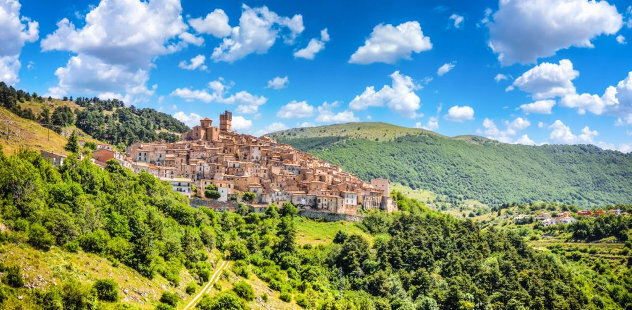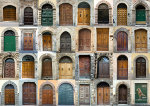Italian mortgage market recovers very slowly
Kop-munt, Saturday, 9 September 2017

After years of contraction, Italian house prices are showing modest growth for the first time this year. Standard & Poor's predicts an average increase of 0.5 percent in a report published this month. This means that Italy has the worst-performing housing market in Europe.
Italians are recovering extremely slow from the financial crisis. Eurostat figures show that the Italian housing market is the only one in Europe that has lost value since 2010. Even Spain has been on the increase since the beginning of 2015. A slow economic recovery is hindering the housing market. Moreover, the average Italian accepts the loss in value, assuming that the housing market will recover at a later stage. The number of home sales more than halved between 2006 (860,000) and 2013 (403,000). This resulted in a locked housing market, hardly any new houses were sold, and property developers and other parties in the real estate chain were in trouble. So much so that the housing sector is responsible for almost half of all bad loans from the banks, which were in trouble as a result. Earlier this year, Italy had to bail out two banks for EUR 17 billion.
Finally growth again
The mortgage market, on the other hand, is showing healthy growth. Although housing values have not risen, the number of sales has been increasing since 2014. So much so that the Associazione Bancaria Italiana announced that in 2015 the volume of residential mortgages rose by 97% compared to the previous year. In total, the Italian market amounts to EUR 361.8 billion in mortgages.
Longer fixed-rate periods
The average Italian mortgage amounts to 119,000 euros and has a Loan-to-value of 69.3 percent and an interest rate of 2.5 percent. The term of Italian mortgages was always relatively short - around fifteen to twenty years - but in recent years this has shifted more towards thirty years. Because of the low-interest rates, variable interest rates are no longer a favorite, more than half of the mortgages are concluded with an extended fixed-interest period, often the full term. Mortgage providers are relatively strict and look in particular at income: monthly housing costs should not exceed 30% of income.
The mortgage market is fragmented, with eighty banks accounting for about eighty percent of the market. Mortgage advisors, whether independent or not, usually manage to get better deals for their customers than when they call directly at the bank. However, there is a commission that can amount to up to 3% of the loan sum.
Starters
To make life a little easier for starters in the housing market, the Italian Government has introduced tax rebates for first-time buyers. Also, since 2014 there has been the Garanzia Prima Casa Fund, a kind of National Mortgage Guarantee, whereby the government guarantees half of the mortgages that do not exceed 250,000 euros. However, not all banks are involved, and according to analysts of credit rating agency Fitch, the scheme has little effect.
 This article of is subject to a license. Based on . Translated from the Dutch language by Jos Deuling.
This article of is subject to a license. Based on . Translated from the Dutch language by Jos Deuling.

After years of contraction, Italian house prices are showing modest growth for the first time this year. Standard & Poor's predicts an average increase of 0.5 percent in a report published this month. This means that Italy has the worst-performing housing market in Europe.
Italians are recovering extremely slow from the financial crisis. Eurostat figures show that the Italian housing market is the only one in Europe that has lost value since 2010. Even Spain has been on the increase since the beginning of 2015. A slow economic recovery is hindering the housing market. Moreover, the average Italian accepts the loss in value, assuming that the housing market will recover at a later stage. The number of home sales more than halved between 2006 (860,000) and 2013 (403,000). This resulted in a locked housing market, hardly any new houses were sold, and property developers and other parties in the real estate chain were in trouble. So much so that the housing sector is responsible for almost half of all bad loans from the banks, which were in trouble as a result. Earlier this year, Italy had to bail out two banks for EUR 17 billion.
Finally growth again
The mortgage market, on the other hand, is showing healthy growth. Although housing values have not risen, the number of sales has been increasing since 2014. So much so that the Associazione Bancaria Italiana announced that in 2015 the volume of residential mortgages rose by 97% compared to the previous year. In total, the Italian market amounts to EUR 361.8 billion in mortgages.
Longer fixed-rate periods
The average Italian mortgage amounts to 119,000 euros and has a Loan-to-value of 69.3 percent and an interest rate of 2.5 percent. The term of Italian mortgages was always relatively short - around fifteen to twenty years - but in recent years this has shifted more towards thirty years. Because of the low-interest rates, variable interest rates are no longer a favorite, more than half of the mortgages are concluded with an extended fixed-interest period, often the full term. Mortgage providers are relatively strict and look in particular at income: monthly housing costs should not exceed 30% of income.
The mortgage market is fragmented, with eighty banks accounting for about eighty percent of the market. Mortgage advisors, whether independent or not, usually manage to get better deals for their customers than when they call directly at the bank. However, there is a commission that can amount to up to 3% of the loan sum.
Starters
To make life a little easier for starters in the housing market, the Italian Government has introduced tax rebates for first-time buyers. Also, since 2014 there has been the Garanzia Prima Casa Fund, a kind of National Mortgage Guarantee, whereby the government guarantees half of the mortgages that do not exceed 250,000 euros. However, not all banks are involved, and according to analysts of credit rating agency Fitch, the scheme has little effect.
 This article of is subject to a license. Based on . Translated from the Dutch language by Jos Deuling.
This article of is subject to a license. Based on . Translated from the Dutch language by Jos Deuling.

All types of Italian property for sale by private sellers and estate agents. Find your perfect houses, farmhouses or apartment in all regions of Italy including Liguria, Tuscany, Umbria and Marche.
 Some owners of a holiday home in Italy rent out their property to cover the running costs. Renting out to cover your costs is often not that difficult.
But if you want to generate income by renting out your home, then there is a lot more to it.
Some owners of a holiday home in Italy rent out their property to cover the running costs. Renting out to cover your costs is often not that difficult.
But if you want to generate income by renting out your home, then there is a lot more to it.
More articles